Godzilla vs. Kong was easily the most excited I have been for a movie since… well, since right before Covid-19 hit and delayed A Quiet Place: Part II indefinitely. Most of the Monsterverse films are little more than disposable fun (except for the 2014 Godzilla, which is a straight-up great blockbuster as far as I’m concerned), but I got hyped regardless and found myself entertained as I watched the big gorilla and the big lizard punch each other on-screen. To the surprise of no one, Godzilla vs. Kong‘s human characters feel superfluous, which led to the common refrain of “well it’s a kaiju movie, of course the human characters suck!” This feels like a total cop-out though, because not only are there several good human characters in the long history of the Godzilla and Kong franchises, but we had a solid human cast in Godzilla 2014. Think about it – we don’t get any giant monsters until about forty minutes in and Godzilla himself doesn’t show up until nearly an hour has passed. The humans have to hold up the entirety of that first hour and the film doesn’t suffer because of it – can you imagine that with one of the more recent Monsterverse movies? So what happened? How did we get from the grounded human drama of Godzilla 2014 to the melodrama and camp of the latter-Monsterverse? Let’s examine each of these movies in turn and see how the human characters were handled there.
Oh, and in case it wasn’t obvious?
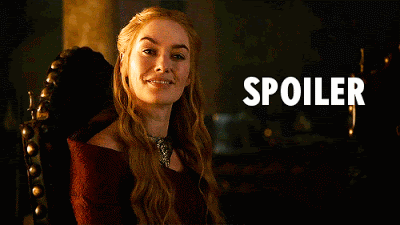
Alright, with that said, let’s get into this…
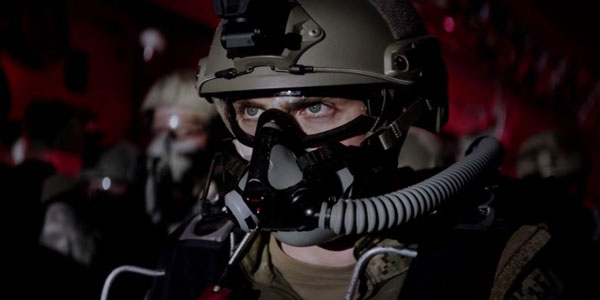
Godzilla (2014)
At the time of its release, one of the big controversies with Godzilla 2014 (which I’m just going to refer to as “Godzilla” from here on for simplicity’s sake) was that Bryan Cranston’s Joe Brody shouldn’t have been killed off and that they should have killed the film’s actual main character, Aaron Taylor-Johnson’s Ford Brody, instead. The reasoning for this is because Joe was a far more compelling character than Ford, which is hard to deny – he’s a broken man driven to self-destructive obsession to try to understand the unexplained nuclear reactor meltdown which killed his wife a decade and a half ago. There’s some good family drama early on where he and Ford reluctantly reconnect and try to uncover what caused the reactor disaster. Cranston puts his everything into this role, and the writing is interesting enough to carry the film on its own long before any kaiju appears on-screen. However, as soon as the first MUTO emerges and Joe dies, Ford takes over and is characterized as a dull, lawful good soldier. I can see how this would be a big come-down from Joe’s more compelling characterization, but I feel like this was an underrated narrative decision which ultimately made Godzilla a stronger film overall.
The best and most distinctive part of Godzilla is that it frames the kaiju action at a human level. The monsters are enormous, rarely able to fit into the frame and they are so gargantuan and unstoppable that the lives and cares of humans are unworthy of their attention. Some of the most memorable scenes in this film are just random humans trying to survive the destruction going on around them, with the audience’s full understanding that it is all unintentional collateral damage. For example, the tsunami in Hawaii or Godzilla going through the Golden Gate Bridge aren’t particularly crucial moments in the plot, but they get so much focus because they show the scale of the devastation that these monsters can unintentionally cause from a human perspective. In this kind of narrative, you need someone on the ground level who would have to be in the vicinity of the monsters in order to progress the story and Ford works perfectly in this regard. Think about it – what would Joe have done to improve the plot if he didn’t die? He’s not a soldier; at most he would be working with Monarch to try to stop the MUTOs. In order to keep Joe in this film, we would either require more dull expository scenes with Monarch (which would hurt this film’s pacing), or he’d have to be awkwardly shunted to the background of the film in order to preserve the narrative direction. Ultimately, killing him off was the most efficient solution – unfortunate, but necessary to preserve the pacing of the narrative.
On the other side of the narrative, we have Ken Watanabe as Dr. Serizawa. He isn’t really a main character per se, instead acting as more of a mouthpiece to deliver exposition and, perhaps unintentionally, deliver memes straight to the audience. He’s in the movie just enough to let us know what’s going on and who we should be rooting for, but he doesn’t make a huge impression. He’s functional and unobtrusive.
That said, Godzilla‘s biggest sin would be how badly it wastes Elizabeth Olsen’s Elle Brody. Like… seriously? You got Elizabeth Olsen (who had just received critical acclaim for Martha Marcy May Marlene and was poised for superstardom in the MCU) and then trapped her in a forgettable role as Ford’s wife. She barely even appears in the movie, but there’s no good reason for this to be the case. She’s a freaking nurse caught in the big showdown in San Francisco, you’re telling me you can’t find something for her to do? Especially in the early hours of the attack in San Francisco, before Ford is even on-site, she should be treating victims, avoiding falling buildings, etc.
Godzilla‘s human characters aren’t the most compelling out there, but you can see that they’re interesting enough to carry a good chunk of the film by themselves and provide a strong narrative grounding which only serves to make the overall film stronger. The monsters are still the main draw, but the humans don’t feel like they’re actively robbing us of anything interesting. It strikes by far the best balance in the entire Monsterverse and looking back it really is shocking how bad the human characters have become in comparison.
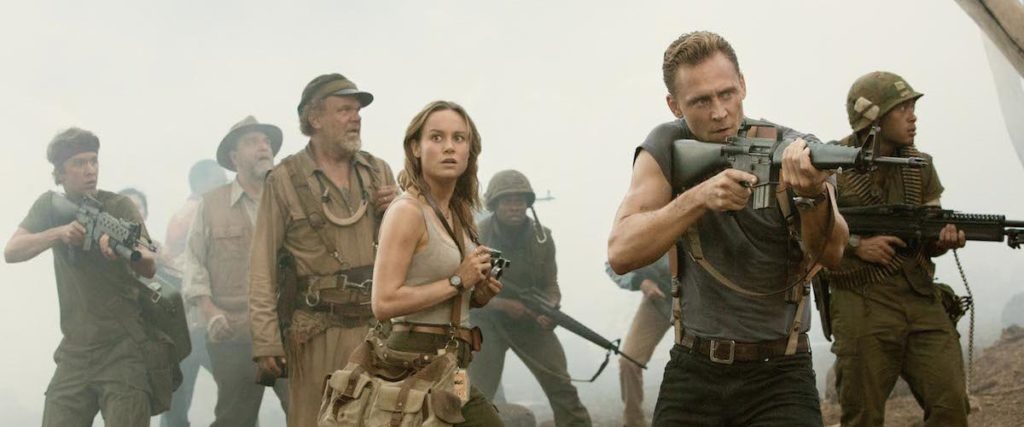
Kong: Skull Island
Kong: Skull Island starts out promisingly enough, introducing us to a large and colourful cast of human characters. They’re all clear archetypes (Tom Hiddleston’s your action hero, Brie Larson’s your tough leading lady, Samuel L. Jackson’s your Vietnam squad leader, John Goodman’s your shady, desperate scientist), but they’re interesting enough to give us people to care about and get the plot moving forward. The problem with Skull Island is that these characters don’t really go anywhere beyond these basic archetypes. Once the characters end up on Skull Island, they have little to no development to speak of, with the only real exception being that Samuel L. Jackson’s Preston Packard goes kill-crazy (which is particularly notable because it is implied to be due to PTSD from the Vietnam War which leads to this breakdown, providing some well-trodden political commentary on the film’s 70s backdrop). The lack of development is particularly disappointing with Tom Hiddleston’s Conrad and Brie Larson’s Weaver – you’d think they’d at least give their leading duo something to do other than just look cool, but nope.
Luckily, Kong manages to get away with having such a disposable human cast by treating them as, well, disposable. The cast gets quickly whittled down one-by-one in fun ways at a quick pace. Like Godzilla, Kong: Skull Island wastes several of its talented actors, but I’m less annoyed about it here because Kong seems to understand the how high-profile its cast is and revels in killing them off unexpectedly. If anyone feels truly wasted it would be John Goodman, but he gets a funny and memorable death which helps make up for it. That’s not even mentioning Shea Whigham who, as a recent viral tweet stated, has one of the funniest death scenes ever. It almost feels like a disrespectful way to off one of the most colourful characters in the film, but it’s so funny that it is hard to hold it against the movie.
Kong also has one ace up its sleeve in the human character department and that’s John C. Reilly’s Hank Marlowe. He gets by far the most interesting characterization as a World War II fighter pilot who gets stranded on the island with a Japanese soldier and is instantly endearing to us with his fun personality, capability and desperation to get home to his wife and son who has hasn’t seen in almost thirty years. Seeing him reuniting with his family at the end is surprisingly poignant for a film that is almost entirely breakneck-paced action up to that point.
Kong: Skull Island represents the best and worst of human characters in a kaiju film. On the one hand, the cast is undeveloped and exist mainly to be killed off in fun ways, but on the other hand they’re just interesting enough to carry the plot forward, shuffle us along to a lot of entertaining action sequences and don’t feel like they’re detracting us from the good stuff (Kong kicking ass). While developing a couple more cast members would make the narrative resonate more, this is around the baseline of what you could consider “acceptable” for a broad-appeal adventure movie.
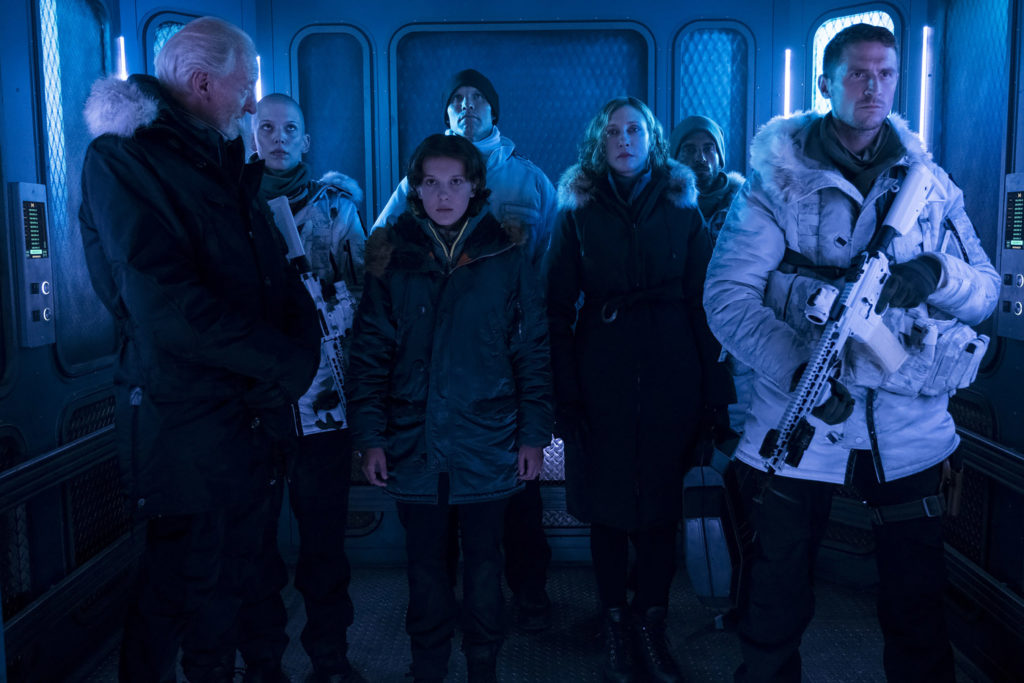
Godzilla: King of the Monsters
The number one complaint about Godzilla was that the title monster didn’t show up nearly enough. King of the Monsters came along to try to right that, but the end result leaves me so mixed. On the one hand, this is a fundamentally flawed film, but it might be my favourite entry in the Monsterverse and is the best 5/10 movie I’ve ever seen by far. At the very center of King of the Monsters‘ flaws are those human characters, which are probably the worst in the franchise in some ways.
King of the Monsters has more of an epic, globe-trotting scale compared to Godzilla‘s grounded and human-level scope. This necessitates a larger cast of soldiers and scientists who are constantly giving exposition dumps to explain what big disaster is going on at any one time, which they make sure to constantly update us on. As if this wasn’t enough by itself, we also have family melodrama between Kyle Chandler, Vera Farmiga and Millie Bobbie Brown (I could not tell you their actual characters’ names for the life of me), who are caught up in a bio-terrorist plot to unleash monsters across the world. This family drama has the potential to be compelling – their son was killed in the attack on San Francisco and it has caused them to grow estranged from each other. Kyle Chandler blames Godzilla for his son’s death and wants to destroy all the monsters, whereas Vera Farmiga uses their loss as motivation to try to save the world. Unfortunately, the film doesn’t explore their relationship any further than that. There’s just no time for human drama with all the action going on and it ends up serving as a way to have a fractured family caught on opposite sides of the conflict.
Serizawa also returns to lead the scientists and he’s about as functional here as he was there. His heroic sacrifice resonates because we’re familiar with the character and he seems like a good person who wants to do the right thing, although he still isn’t very well-developed. As for the rest of the characters, they are a bunch of nobodies. Like, don’t get me wrong, there’s a bunch of people we see a whole lot on the Argo: the lady commander/pilot, the smart alec, O’Shea Jackson Jr.’s soldier character, and probably a couple other nobodies that I’m forgetting because they were all so pointless. Oh and Sally Hawkins reprises her role from the first movie as well, but she was so forgettable there that I didn’t even realize she wasn’t in this as a stunt-casting due to her role in The Shape of Water. Oh, and she gets unceremoniously stepped on early in the film, making her character’s entire existence feel even more hollow.
Unlike Kong: Skull Island, King of the Monsters sticks to Godzilla‘s more serious tone, making these characters all just so dull to watch and entirely forgettable. For example, there’s the scene where Rodan flies over a Mexican town, destroying it from the hurricane-force winds created by his passing. Conceptually, it’s similar to the scene in Godzilla where Godzilla comes ashore in Hawaii and unintentionally creates a tidal wave which wipes out the entire downtown sector, but far less exciting because the film doesn’t bother to make us care about anyone on the ground. Like, they throw O’Shea Jackson and a kid into the scene, but at this point I don’t even know a thing about this soldier and this kid literally just showed up out of nowhere. Not only that, but we don’t even get a proper resolution. One second we see O’Shea Jackson desperately holding onto this kid and then like five minutes later we find out that they’re all fine, not that any of us were wondering anyway. To make matters worse, King of the Monsters does a fantastic job of giving all the monsters distinct personalities. Hell, King Ghidorah’s individual heads have more interesting characterization than anyone in this movie! Worst of all? The human characters actively take up time which should be dedicated to the monsters fighting, especially in the second half of the film. The two most egregious examples are when Rodan and King Ghidorah are fighting and suddenly the film cuts away to dumb drama aboard the Argo and when we get just one shot of Ghidorah wrecking downtown Washington D.C. That’s the kind of moment where some ground-level scenes of destruction could go a long way, but King of the Monsters‘ scope is planted so firmly on its epic, globe-spanning scale that it can’t even take the time to linger on this before zipping the plot ahead to the next big event. Again, I like King of the Monsters and in some ways I think it’s the ideal Hollywood blockbuster interpretation of a kaiju movie, but the human characters are by far its greatest weakness, to the point of being actively detrimental to the whole experience.
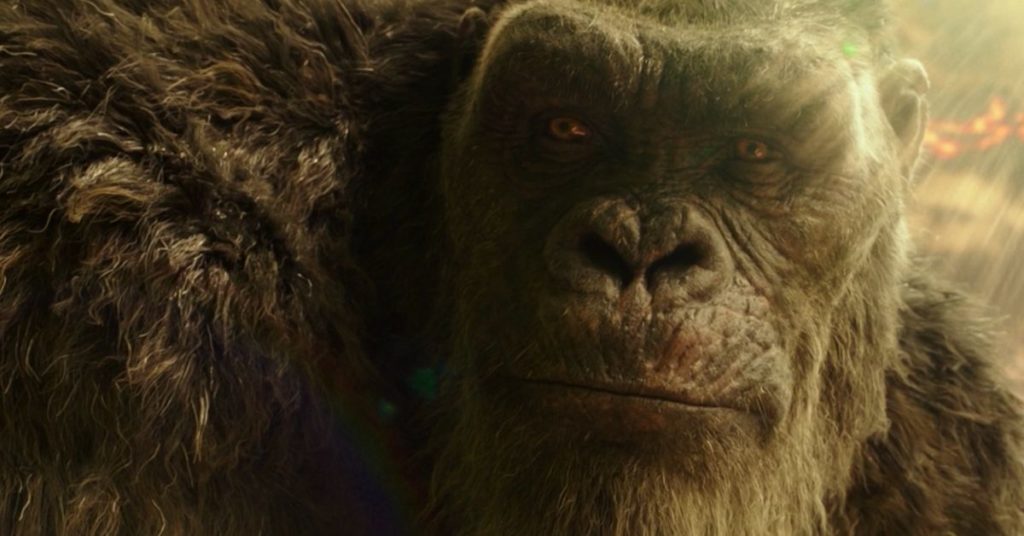
Godzilla vs. Kong
I was nervous going into Godzilla vs. Kong, but after seeing the first trailer I was reassured that they had learned one lesson – even if the human characters inevitably sucked, they had pulled off a masterstroke by making Kong the film’s true leading character and emotional core. That said, some studio head out there decided that there still have to be human characters in this movie, and these are a tale of two halves…
For the Kong half of the film, we get Alexander Skarsgård as Nathan Lind, Rebecca Hall as Ilene Andrews and Kaylee Hottle as Jia. They’re all functional at best and serve little more purpose than to drive the plot forward (Lind has researched the hollow earth, and they need Kong to guide them there) or provide a connection to Kong (Andrews is the top researcher on Kong and Jia has bonded with Kong to the point of being able to communicate with him). This half of the film also features Eiza González in an obviously-villainous corporate underling role as she funds their expedition to the hollow earth, but she similarly has little in the way of development or interesting motivation, you just sit there waiting for her sudden but inevitable betrayal. Like most people in the Monsterverse, the humans in this half of the film are purely functional – not actively detrimental or disruptive, but about as uninteresting as you’d expect from a film like this… so better than King of the Monsters, at least.
Speaking of which, that brings us to the Godzilla half of the film, which is centered around Millie Bobby Brown’s returning character, Madison, along with her friend and a bumbling conspiracy theorist who unearth a sinister conspiracy afoot at Apex Cybernetics… and good God, this is by far the worst set of characters we’ve gotten in the entire Monsterverse. Godzilla vs. Kong makes the interesting decision of dialing back on the po-faced seriousness of Godzilla and King of the Monsters and instead goes for a campier tone. This is an sensible idea for a monster movie, since they are intended to be a breezy fun time, but the camp is cranked to the max whenever this trio is on-screen to the point of being grating. It’s to the point of being cartoonish, as these three clowns bumble their way into Apex Cybernetics, somehow avoiding detection the entire way, until they come face-to-face with the moustache-twirling corporate villain. This half of the film also suffers from two egregious sins (actually let’s make that three – Jessica Henwick was cast but cut from the final film, what the fuck movie!?). The first is that poor Kyle Chandler is completely wasted, relegated to little more than a cameo role. A familiar face would have done wonders and I struggle to see how you couldn’t have worked him into the plot in a more substantial manner. The second sin is that the bad guy’s main henchman is freaking Ren Serizawa, the son of Ken Watanabe’s Dr. Serizawa, and the film doesn’t play this fact up at all. Hell, he even dies unceremoniously, making the entire existence of this character pointless. Like, at that point why not just make him a nameless goon? Or just fold his role into that of the main bad guy? I don’t understand this decision and all I can think is that there was significant chunks of story cut out in the final film which may have expanded on his role.
So Godzilla vs. Kong has one set of characters who are functional at best and another set that I actively wish would die. This might have been a crippling flaw for the film but, like I said at the outset, Godzilla vs. Kong downplays this issue by making Kong the true main character. This provides what should be a blueprint for future Monsterverse films where they won’t feel like they have to saddle us with boring or annoying humans and instead focus on the monsters directly. That said, I would like to see a return to what made the first Godzilla film so successful, where the action is shown from ground level with humans scrambling just to survive. King of the Monsters already put the stakes about as high as they can realistically get, so I feel like trying to maintain that kind of scope just isn’t sustainable and instead the right course of action is to lean into the human stakes instead. I really enjoy the Monsterverse and it would be great to see this franchise continue and improve as time goes on